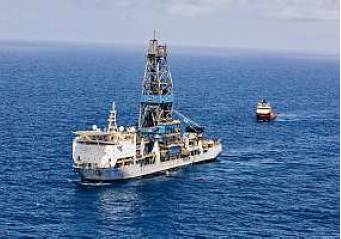Commentary
Exxon up to old tricks in breaking its promise in Guyana
CHRIS TOMLINSON
Exxon Mobil recently pledged to stop flaring in one of North America’s oldest oil patches, but when it comes to its newest field in the Caribbean, the United States’ largest oil company is burning gas like there is no tomorrow.
Local activists have asked a judge to order Guyana’s Environmental Protection Agency to end Exxon’s flaring at one of the most significant offshore oil discoveries in a generation. The lawsuit alleges that Exxon has almost continuously burned off natural gas since 2019, breaking a promise to capture the gas and reinject it into the wells.
Exxon confirmed enormous oil and gas reserves off Guyana’s coast in 2015, and the Irving-based company’s leadership promised to develop the basin responsibly. The original contract required Exxon almost never to burn or release the natural gas it produced while pumping crude.
Fishers, though, saw flares burning on Exxon’s rigs about 140 miles offshore in 2019. In 2020, residents complained about Exxon flaring 3 billion cubic feet of gas during the first year of operations. Guyana’s EPA executive director, Vincent Adams, promised the flaring was only part of the startup process.
But last May, Adams unilaterally modified Exxon’s permit to allow routine flaring, and the fire plumes have become part of the seascape. The company has acknowledged burning 15 billion cubic feet of energy.
“Exxon Mobil didn’t tell us to begin with,” said Sinikka Henry, a lecturer at the University of Guyana who is part of the suit. “Exxon Mobil told us they had to flare because their gas compressor wasn’t working. For more than two years, Exxon Mobil has been using faulty equipment, flaring and making climate change worse.”
In an emailed statement, Exxon spokesperson Meghan Macdonald said operators are reinjecting and consuming close to 90 percent of the gas produced and have reduced flaring by more than half.
“We work openly and transparently with the EPA and have robust compliance-assurance systems that enable the identification and timely reporting of operational issues with the EPA and Ministry of Natural Resources,” she wrote. “Our work and the support of the government of Guyana are the basis of a longterm mutually beneficial relationship that has created significant value for the people of Guyana.”
The lawsuit, filed Saturday, asks a judge to declare Exxon’s modified permit invalid, require Guyana’s EPA to enforce the original agreement and report how much gas Exxon has flared and what toxins were released.
“Guyanese have no way of knowing how much gas is actually being flared by Exxon. We are also hobbled by a government and ‘regulators’ who care more about short-term monetary gains,” said Sherlina Nageer, another of the plaintiffs.
Exxon has estimated it could produce the equivalent of 8 billion barrels of oil in Guyana over the next decade. The basin is critical to the company’s future and stock price.
This year, Exxon’s offshore Guyana complex will total 10 drill centers with 23 oil-producing wells, 15 water injection wells, and nine gas reinjection wells. The wells are supported by two ships capable of processing 340,000 barrels of oil per day.
Guyana and Exxon hope to add dozens more wells in the years ahead, and Exxon CEO Darren Woods will speak at an oil and gas conference in Georgetown, Guyana’s capital, next month.
Guyanese want Woods to explain why Exxon backtracked on its commitment to no flaring. They also want to know if he will echo the pledge he made to end routine flaring in Texas by 2030.
What’s most disappointing is that Guyana’s Stabroek block was new territory, a chance to set an example for responsible oil and gas extraction in a world struggling to mitigate climate change.
Instead, we have another global corporation systematically breaking extravagant promises made to an impoverished nation with needy politicians. Big Oil promises it will behave better with every project in a low-income country, and then we see the same old tricks.
Exxon signed a legal document promising no flaring, then after the operations began, it reneged. Then there’s financial transparency.
The government promised that an independent auditor would review all the expenses that Exxon deducts from the royalties and taxes paid to the government. But the government is stalling on the latest audit of $460 million in Exxon’s spending, and the opposition party is protesting.
Transparency International, the global anti-corruption watchdog, lowered Guyana’s scorecard this week, ranking it 87th out of 180 countries.
Anyone who has tracked Big Oil’s work in developing countries will recognize the pattern of rewarding elites while disregarding environment and financial transparency.
Woods could have done things differently this time, but he didn’t, providing another reason why Exxon needs a new chief executive.
Tomlinson writes commentary about business, economics and politics. twitter.com/cltomlinsonchris.tomlinson@chron.com


